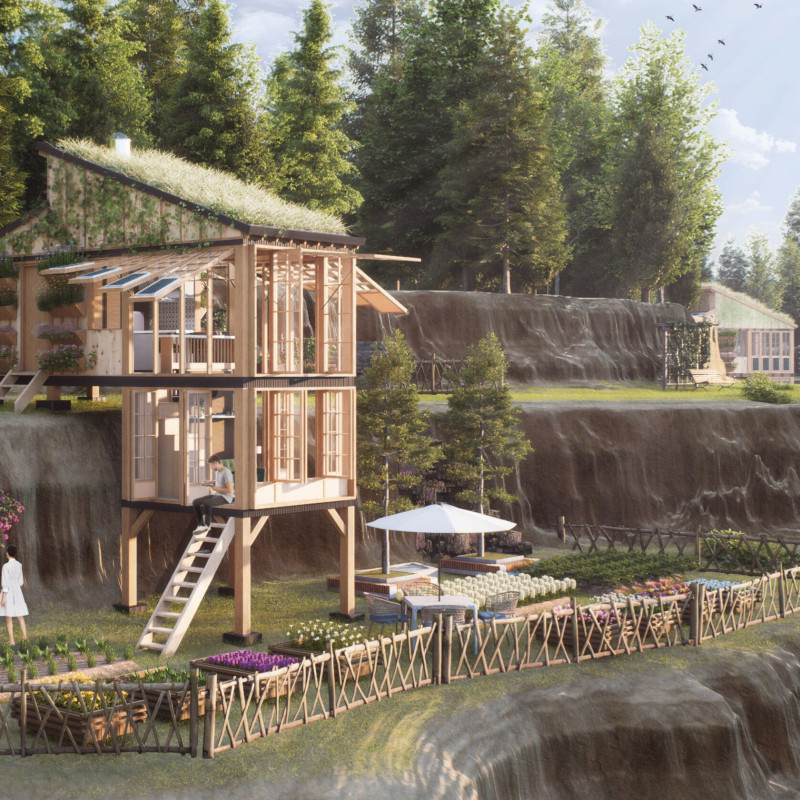5 key facts about this project
From the exterior, the architecture presents a harmonious blend of contemporary and traditional elements, which reflects the locale's architectural language while infusing it with a modern sensibility. The building’s façade is characterized by a mix of textures and materials, including high-performance concrete, glass, and sustainable timber, which not only enhance visual interest but also improve energy efficiency and structural integrity. The use of low-emissivity glass allows natural light to seep into the interiors, creating an inviting atmosphere while minimizing heat gain.
The project’s layout is strategically designed to facilitate easy navigation and interaction among users. Open-plan spaces are interspersed with more defined areas, allowing for a dynamic flow that can accommodate gatherings and events. The incorporation of flexible spaces that can be repurposed depending on the needs of the community reflects an innovative approach to modern architecture. This flexibility is particularly important in urban environments where diverse functions must coexist.
Unique design approaches within the project are evident in its commitment to sustainability. From the outset, the design team prioritized environmentally responsible strategies, which manifested in features such as a green roof and rainwater harvesting systems. These elements not only contribute to the building's ecological performance but also promote a connection to nature, fostering a sense of well-being among its users. The landscaping surrounding the building complements the architecture, blurring the lines between the indoor and outdoor environments. The integration of native vegetation not only enhances the aesthetic quality of the site but also supports local biodiversity.
The architectural details reveal a keen attention to craftsmanship and materiality. The contrast between the polished concrete surfaces and the warmth of the timber offers a tactile experience that invites exploration. Interior spaces feature thoughtful elements such as exposed structural components and the thoughtful positioning of windows that frame specific views, encouraging occupants to engage with the surrounding landscape.
The project's design philosophy reflects a respect for its cultural context, as it draws inspiration from local traditions and architectural styles while simultaneously pushing the boundaries of contemporary design. This balance allows the project to resonate with its community and establish a sense of place, which is crucial in today’s fast-paced urban environments.
This architectural endeavor stands as a testament to how innovative ideas can be effectively melded with practical functionality, making it a significant contribution to the architectural landscape. Those interested in a deeper understanding of the project are encouraged to explore the architectural plans, architectural sections, and architectural designs presented in the project documentation. By examining these elements, readers can gain further insights into the intricate thought processes and design ideas that have shaped this compelling project.


























